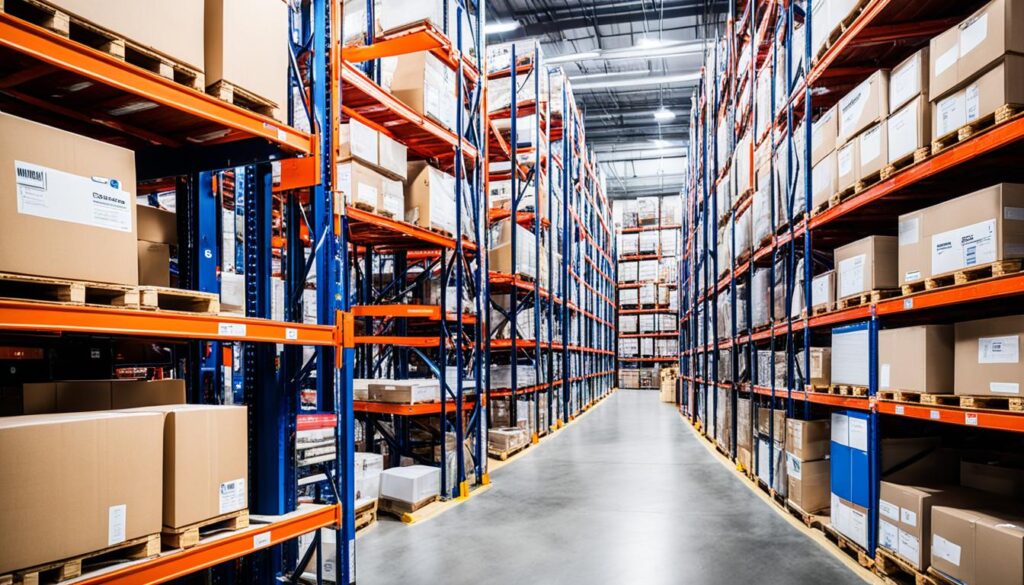When it comes to long-term growth for your small business, a strategically utilized small business loan can be a game-changer. Whether you’re looking to expand your operations, enhance your market position, or simply improve your business efficiency, there are several strategic ways to make the most out of a small business loan.
By leveraging this financial resource effectively, you can take your business to new heights and achieve the long-term growth you’ve been working towards. In this article, we will explore ten strategic ways to utilize a small business loan and maximize its impact on your business.
Key Takeaways: Small Business Loan For Long Term Growth
- Utilizing a small business loan can contribute to long-term growth and success.
- Strategic utilization of funds can help expand operations and enhance market position.
- Investing in equipment, refinancing debt, and acquiring a business are effective strategies.
- Utilizing the loan for start-up costs and covering everyday operations can improve efficiency.
- Staying competitive through technology updates and expansion can boost market presence.
Utilizing a Small Business Loan for Everyday Operations
Small business owners can leverage a small business loan to effectively manage their everyday operations. This flexible financing option provides the necessary working capital to cover various expenses, ensuring the smooth functioning of the business. By utilizing a small business loan, entrepreneurs can effectively manage their expenses, navigate through business fluctuations, and maintain stability during off-peak seasons.
When it comes to everyday operations, small business loans can be used to address critical needs such as payroll, rent, and marketing expenses. The loan helps bridge the gap between revenue generation and expenses, providing business owners with the necessary funds to sustain and grow their operations.
One of the key advantages of utilizing a small business loan for everyday operations is access to working capital. A small business loan injects much-needed liquidity into the business, ensuring that entrepreneurs have the financial resources needed to manage day-to-day expenses. This working capital can be particularly valuable during business fluctuations and off-peak seasons when revenue may fluctuate.
During off-peak seasons, businesses often experience lower sales volumes, which can create challenges in managing cash flow and meeting expenses. However, with a small business loan, entrepreneurs can bridge these gaps and maintain a steady flow of operations. The loan provides the necessary financial buffer to cover expenses during lean periods, ensuring business continuity.
Furthermore, utilizing a small business loan for everyday operations allows business owners to effectively manage their expenses. By having access to additional funds, entrepreneurs can prioritize their spending, ensuring that critical areas such as payroll and rent are covered. This can alleviate financial stress and allow business owners to focus on growing their operations.
In summary, a small business loan can be a valuable tool for business owners looking to manage their everyday operations. With the availability of working capital, entrepreneurs can effectively navigate business fluctuations and off-peak seasons, ensuring stability and growth. By leveraging this financial resource, small business owners can focus on managing their expenses, sustaining operations, and positioning their businesses for long-term success.
Investing in Equipment or Machinery

When it comes to running a successful business, having the right equipment and machinery is essential. Whether you need specialized tools, production machinery, or technology upgrades, investing in the right equipment can significantly impact your operations. And if you’re a small business owner looking to scale up operations or replace equipment that is on its last legs, a small business loan can provide the necessary financial support.
By utilizing a small business loan, you can upgrade your existing equipment or invest in state-of-the-art machinery that can streamline your processes and enhance productivity. This not only improves the overall efficiency of your operations but also helps you meet increasing demand and stay competitive in your industry.
One of the advantages of using a small business loan for equipment or machinery is that it allows you to preserve your working capital. Rather than depleting your cash reserves, you can use the loan funds to make the necessary purchases while keeping your business financially stable. This flexibility is especially crucial for small businesses, as it ensures you have the funds available for other operational expenses.
Benefits of Investing in Equipment or Machinery with a Small Business Loan
There are several key benefits to consider when utilizing a small business loan for equipment or machinery:
- Increased Efficiency: By upgrading your equipment or machinery, you can streamline your operations and improve overall efficiency. This can lead to faster production times, fewer errors, and increased output.
- Enhanced Product Quality: Investing in modern equipment or machinery often leads to better product quality. Higher quality products can attract more customers and help build a positive reputation for your business.
- Cost Savings: Newer equipment and machinery often come with improved energy efficiency and reduced maintenance costs. This can result in long-term savings for your business.
- Competitive Advantage: Equipping your business with the latest technology and machinery can give you a competitive edge in the market. It allows you to deliver products or services more efficiently, meet customer demands faster, and stay ahead of your competitors.
Overall, investing in equipment or machinery with a small business loan can help propel your business forward and position it for long-term success. It provides the financial means to upgrade outdated assets, expand your capabilities, and meet the evolving needs of your customers.
Funding Tenant Improvements

When businesses move into a new commercial space, they often need to make significant renovations or build-outs to customize the space for their specific needs. These tenant improvements can include upgrading the infrastructure, adding new fixtures, or reconfiguring the layout to optimize functionality. However, undertaking such projects can be costly, and that’s where a small business loan can be a valuable resource.
A small business loan can provide the necessary funds to finance tenant improvements and cover the project costs. By securing financing, business owners can enhance their new commercial space and create an environment that aligns with their vision. Whether it’s a restaurant requiring a new kitchen, an office space needing additional meeting rooms, or a retail store seeking to improve the layout, a small business loan can make these projects financially feasible.
By utilizing a small business loan for tenant improvements, businesses can enjoy several benefits. First and foremost, they have the opportunity to create a space that reflects their brand identity and operational requirements. This allows them to provide a better experience for their customers and employees, ultimately improving overall satisfaction and productivity.
Additionally, investing in tenant improvements can increase the value of the commercial space. By enhancing the aesthetic appeal and functionality of the property, businesses may attract higher-quality tenants and negotiate more favorable lease terms in the future. This can positively impact the long-term profitability of the business.
Key Considerations for Using a Small Business Loan for Tenant Improvements
Before applying for a small business loan for tenant improvements, there are several key factors that business owners should consider:
- Evaluate the project scope and costs: Conduct a thorough assessment of the required renovations or build-outs and estimate the associated expenses. This will help determine the appropriate loan amount to request.
- Review lease terms and responsibilities: Understand the lease agreement to determine which tenant improvements are the responsibility of the business owner. Review any restrictions or requirements outlined in the lease.
- Develop a detailed project plan: Outline the specific improvements and create a timeline for completion. This will help streamline the loan application process and ensure efficient utilization of funds.
- Research lenders and loan options: Explore different lenders and loan options to find the best fit for the business’s financial needs. Compare interest rates, repayment terms, and eligibility requirements.
Example of a Small Business Loan for Tenant Improvements
Let’s consider the case of Sarah, a small business owner who recently leased a vacant retail space to open her boutique clothing store. Sarah’s vision is to create an inviting and modern atmosphere to attract customers and differentiate her store from competitors. To achieve this, she needs to invest in various tenant improvements, including:
- Installing new flooring and lighting
- Building dressing rooms
- Adding display shelves and racks
- Painting and rebranding the exterior
Sarah estimates that these improvements will cost approximately $50,000. However, she doesn’t have sufficient capital on hand to cover the expenses upfront. After conducting thorough research, Sarah decides to apply for a small business loan with a reputable lender that specializes in financing commercial space improvements.
Upon approval of her loan application, Sarah receives the necessary funds to complete the tenant improvements. Over the course of a few months, her retail space transforms into the envisioned boutique, creating a visually appealing and functional environment for customers to explore and shop.
Finance Your Tenant Improvements with a Small Business Loan
A small business loan can be an invaluable tool for financing tenant improvements in a commercial space. By utilizing these loan funds, business owners are empowered to create a space that enhances their operations, attracts customers, and sets them up for long-term success. Whether it’s a restaurant, office, or retail store, a small business loan can provide the financial support needed to bring their vision to life.
Don’t let the costs of tenant improvements limit your business’s potential. Explore small business loan options today and unlock the opportunities for growth and success!
| Key Benefits of Using a Small Business Loan for Tenant Improvements |
|---|
| Allows businesses to customize and optimize their commercial space |
| Enhances the overall customer experience |
| Potentially increases the value of the commercial property |
| Attracts higher-quality tenants and improves lease negotiation position |
| Creates a differentiated and visually appealing business environment |
Purchasing Inventory

Retailers and specialty stores that rely on inventory sales can greatly benefit from utilizing a small business loan to purchase inventory in bulk. Buying in larger quantities allows business owners to efficiently stock their shelves and potentially take advantage of discount pricing, enhancing their competitive edge in the market.
When retailers buy inventory in bulk, it offers several advantages. Firstly, it ensures a consistent and well-stocked inventory that meets customer demand. By having a wide selection of products readily available, businesses can cater to the needs and preferences of their customers, enhancing customer satisfaction and loyalty.
Advantages of Purchasing Inventory in Bulk
Purchasing inventory in bulk provides several advantages for retailers:
- Cost Savings: Bulk purchases often come with discounted pricing. By buying in larger quantities, retailers can negotiate better prices with suppliers, leading to cost savings.
- Improved Profit Margins: Lower procurement costs due to bulk buying can lead to increased profit margins. This allows retailers to maintain competitive pricing while maximizing profitability.
- Efficient Stock Management: Buying inventory in bulk minimizes the need for frequent reordering, reducing administrative tasks and optimizing stock management processes.
- Responsive to Demand: With a well-stocked inventory, retailers can respond promptly to customer demands, minimizing the risk of running out of popular products.
- Consistency in Supply: Bulk purchases ensure a consistent supply of inventory, reducing the risk of disruptions due to supply chain issues or sudden spikes in demand.
To illustrate the advantages of purchasing inventory in bulk, consider the following example:
| Scenario | Outcome |
|---|---|
| ABC Clothing Store buys clothing inventory in bulk from a supplier. | The store receives a discount of 10% on the bulk purchase, resulting in cost savings of $1,000. The inventory is well-stocked, allowing the store to meet customer demands without delays or stockouts. |
| XYZ Jewelry Store purchases jewelry inventory in smaller quantities from multiple suppliers. | The store pays regular prices and faces challenges in meeting customer demands during peak seasons due to delays in inventory restocking. |
By utilizing a small business loan to purchase inventory in bulk, retailers can optimize their inventory management, enhance their profitability, and ensure customer satisfaction.
Refinancing Debt

Small business owners who find themselves burdened with high-interest online loans have the option to refinance their debt through a small business loan. By leveraging a small business loan, business owners can benefit from more affordable rates, ultimately leading to substantial savings and opportunities for business growth.
Debt refinance is a strategic move that enables small business owners to take control of their financial situation and improve their cash flow. By refinancing their existing debt, they can replace high-interest online loans with a general business loan that offers more favorable terms and conditions.
One of the primary benefits of refinancing debt is the significant savings it can generate. With lower interest rates and potentially longer repayment terms, business owners can see substantial monthly savings. These savings can then be redirected towards other critical areas of the business, such as investing in new equipment, hiring additional staff, or expanding marketing efforts.
Refinancing debt not only helps business owners save on interest payments but also provides them with the opportunity to consolidate multiple loans into a single, manageable monthly payment. By streamlining their debt obligations, business owners can simplify their financial management and improve their overall financial stability.
Furthermore, refinancing debt can contribute to business growth by freeing up cash flow and improving the company’s financial standing. With more financial flexibility and reduced debt burdens, small business owners can channel their funds towards essential operational expenses, innovation, and strategic initiatives. This can position the business for long-term success and help it stay competitive in the market.
Overall, refinancing debt through a small business loan offers small business owners the chance to optimize their financial resources, reduce their interest expenses, and pave the way for business growth. By taking advantage of more affordable rates, business owners can improve their financial stability, strengthen their market position, and unlock new opportunities for success.
The Benefits of Debt Refinance with a Small Business Loan
Refinancing debt through a small business loan offers several key benefits:
- More affordable rates: By refinancing online loans with a small business loan, business owners can take advantage of lower interest rates, resulting in significant savings over time.
- Improved cash flow: With reduced monthly payments, refinancing debt frees up cash flow, providing business owners with more financial flexibility to invest in growth opportunities.
- Consolidated debt: Refinancing allows business owners to combine multiple loans into a single, more manageable monthly payment, simplifying their financial management.
- Enhanced financial stability: By refinancing debt, business owners can improve their overall financial stability and reduce the risk of default or financial strain.
Acquiring a Business or Starting a Franchise

A small business loan can be a valuable tool for entrepreneurs looking to acquire an existing business or start a franchise. With the right financing, business owners can turn their dreams into reality and achieve their long term goals. Whether it’s purchasing a competing business to expand market share or opening a new franchise location, a small business loan can provide the necessary working capital to make these ventures successful.
Acquiring an established business can be a strategic move for entrepreneurs looking to enter new markets or diversify their offerings. With a small business loan, aspiring business owners can secure the necessary funds to complete the acquisition, including the purchase price and any associated costs. This type of financing allows entrepreneurs to take advantage of existing customer bases, established brand recognition, and operational systems already in place.
Similarly, starting a franchise offers entrepreneurs the opportunity to tap into an established and proven business model. Franchises often come with built-in support systems and brand recognition, reducing the risk associated with starting a business from scratch. By utilizing a small business loan, entrepreneurs can cover the initial franchise fee, buildout costs, and working capital needed to launch their franchise operation.
Factors to Consider
Before acquiring a business or starting a franchise, there are several factors entrepreneurs should consider:
- Market research: Conduct thorough market research to ensure there is demand for the acquired business or franchise in the target location.
- Financial projections: Develop detailed financial projections to assess the potential profitability and sustainability of the business or franchise.
- Due diligence: Perform comprehensive due diligence to assess the health and viability of the business or franchise, including its financials, customer base, and industry trends.
- Legal considerations: Consult with legal professionals to ensure all necessary legal requirements and contracts are in place.
By carefully considering these factors and utilizing a small business loan, entrepreneurs can embark on a journey towards business ownership and long term success.
Success Story: John’s Acquisition Journey
“Acquiring an existing business was a lifelong dream for me, but the financial aspect always seemed daunting. Thanks to a small business loan, I was able to purchase a well-established local restaurant. The funds allowed me to cover the purchase price, renovate the space, and ensure a smooth transition for both employees and customers. With the support of the loan, I am now the proud owner of a thriving restaurant and on track to achieve my long term goals.”
John’s success story demonstrates how a small business loan can enable entrepreneurs to fulfill their aspirations and experience the rewards of business ownership. Whether acquiring a business or starting a franchise, this type of financing can provide the necessary working capital to turn entrepreneurial dreams into a reality.
| Benefits of Acquiring a Business or Starting a Franchise | Benefits of a Small Business Loan |
|---|---|
| Access to an established customer base | Flexible repayment terms |
| Proven business model and systems | Fast approval process |
| Reduced risk compared to starting from scratch | Competitive interest rates |
| Brand recognition and support | Ability to build credit history |
Covering Start-Up Costs

When launching a start-up, there are various expenses to consider that are vital for establishing and growing the business. These start-up costs include but are not limited to:
- Hiring employees
- Investing in technology
- Implementing advertising and marketing strategies
A small business loan can be a valuable resource for covering these start-up costs and providing the necessary funds for your venture. Here’s how:
- Hiring Employees: Building a successful team is crucial for any start-up. A small business loan can help you cover the costs associated with hiring and training employees, ensuring you have the workforce you need to bring your vision to life.
- Investing in Technology: In today’s digital age, technology plays a vital role in almost every industry. Whether it’s purchasing hardware, software, or building an online presence, a small business loan can provide the necessary capital to invest in the technology you need to streamline operations and remain competitive.
- Implementing Advertising and Marketing Strategies: Building brand awareness and attracting customers is essential for the success of any start-up. A small business loan can help you establish effective advertising and marketing campaigns, allowing you to reach your target audience and promote your products or services effectively.
By utilizing a small business loan to cover these start-up costs, you can focus on executing your business plan and establishing a solid foundation for long-term growth and success.
Contingency planning, human resources, and scaling up operations are additional areas where a small business loan can provide the necessary financial support. With the flexibility and capital offered by a small business loan, you can navigate the challenges of the start-up phase and position your business for future growth.
Expanding an Existing Business

For small businesses that have experienced growth and require expansion, a small business loan can be a valuable tool to fund the necessary steps. Whether it’s hiring additional staff, opening new locations, or constructing a brick and mortar establishment, this financial support can enable businesses to take their operations to the next level.
Before deciding on the best course of action, it’s important for business owners to review their financial projections and history. This analysis will provide valuable insights into the feasibility and profitability of the expansion plans, ensuring that the borrowed funds are used wisely.
Expanding a business often requires hiring additional staff to accommodate the increased workload. Whether it’s hiring new employees or contractors, a small business loan can help cover the costs associated with recruitment, training, and salaries. By having the right team in place, businesses can effectively manage the increased demands and maintain a high level of customer service.
Furthermore, opening new locations can be a key component of expanding a business. With a small business loan, entrepreneurs can secure the necessary funds to lease or purchase new premises, renovate or decorate the space, and equip it with the necessary resources. This expansion allows businesses to tap into new markets, increase their customer base, and potentially generate higher revenue streams.
For businesses operating predominantly in the digital realm, expanding into the brick and mortar world can be a significant milestone. By utilizing a small business loan, entrepreneurs can finance the establishment of a physical store, showroom, or office. This move allows businesses to solidify their brand presence, increase customer trust, and provide a more personalized experience to their clientele.
| Expense | Estimated Cost |
|---|---|
| Hiring Additional Staff | $20,000 – $50,000 (per employee) |
| Leasing or Purchasing New Locations | $100,000 – $500,000 |
| Renovations and Decorations | $10,000 – $50,000 |
| Equipment and Resources | $5,000 – $100,000 |
Expanding an existing business requires careful planning, financial analysis, and access to capital. A small business loan can provide the necessary funds to support the expansion efforts, ensuring that the business can grow and thrive in a competitive market. By strategically utilizing these loans, entrepreneurs can take their businesses to new heights and unlock new opportunities.
Staying Competitive and Conclusion
In today’s competitive business landscape, it is essential for small businesses to stay competitive. One effective way to achieve this is by utilizing a small business loan strategically. By investing in technology updates, leasehold improvements, or operating equipment upgrades, businesses can maintain a competitive advantage in their industry.
Staying up-to-date with the latest technological advancements can significantly impact a small business’s success. With a small business loan, business owners can implement the necessary technology updates to streamline operations, improve efficiency, and enhance customer experience. This investment allows businesses to stay ahead of the curve and adapt to ever-changing market demands.
Furthermore, leasehold improvements play a vital role in optimizing business space. By utilizing a small business loan to fund these improvements, such as renovating storefronts or creating a more attractive ambiance, businesses can attract more customers and elevate their brand image. This not only enhances the overall customer experience but also sets them apart from competitors.
Also Read : First Time Auto Loan Tips For New Borrowers
Ultimately, taking advantage of a small business loan strategically can set businesses up for long-term growth and success. Whether it’s investing in the latest technology updates or improving the physical space, utilizing a small business loan allows entrepreneurs to create a competitive advantage that propels their business forward. By staying ahead of the competition, small businesses can thrive in today’s dynamic business environment.
FAQs
Q: What is a long-term business loan?
A: A long-term business loan is a type of financing that provides a business with a larger sum of money that is repaid over an extended period, typically over three to 10 years.
Q: How does a long-term business loan differ from a short-term business loan?
A: Long-term business loans have longer repayment terms, usually over three to 10 years, while short-term business loans have shorter repayment terms, typically less than one year.
Q: What are the best long-term small business loans available?
A: The best long-term small business loans often include SBA loans, term loans from online lenders, and business lines of credit from traditional banks.
Q: How can I apply for a long-term business loan?
A: You can apply for a long-term business loan through various means, including online lenders, traditional banks, or through the Small Business Administration (SBA).
Q: What are the typical terms for long-term business loans?
A: Long-term business loans usually have repayment terms ranging from three to 10 years, with fixed or variable interest rates depending on the lender.
Q: How can a long-term business loan help grow my business?
A: A long-term business loan can provide the necessary funds for business expansion, purchasing equipment, hiring more employees, or investing in marketing and advertising efforts to help grow your business.
Q: What are the qualifications to get a long-term business loan?
A: Qualifying for a long-term business loan typically requires a good credit score, solid business plan, steady revenue stream, and collateral or a personal guarantee depending on the lender’s requirements.
Source Links
- https://newportllc.com/blog/10-strategies-to-finance-the-growth-of-your-business-in-a-challenging-financial-world
- https://www.linkedin.com/pulse/how-strategic-use-business-loans-growth-expansion-himanshu-kumar-unsuc
- https://cdcloans.com/how-to-use-a-business-loan/